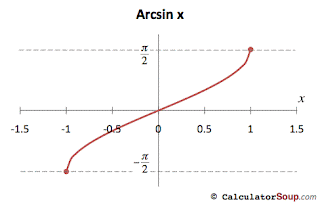Chapter P
P.1
Order Pairs (x,y)
X represents the distance of the point from the Y axis
Y represents the distance of the point from the X axis
Quadrants
Translating Points
Original Points Transformed Point
(x,y) (-x,y) reflection of the original point in the Y-axis
(x,y) (x,-y) reflection of the original point in the X-axis
(x,y) (-x,-y) reflection of the original point through the origin
Distance Formula
Given the two points (x1, y1) and (x2, y2), the distance between these points is given by the formula:
Midpoint Formula
If the coordinates of A and B are ( x1, y1) and ( x2, y2) respectively, then the midpoint, M, of AB is given by the following formula (Midpoint Formula).
Standard Form of the Equation of a Circle
The point (h,k) is the center of the circle, and positive number r is the radius of the circle. The standard form of the equation of a circle whose center is the origin is
P.2
Determining Solution Points
The point (2,13) lies on the graph of y = 10x-7 because it is a solution point of the equation
y = 10x - 7
13 = 10(2) - 7
13 =13
How to Sketch the Graph of an Equation by Point Plotting
1.If possible, rewrite the equation so that one of the variables is isolated on one side of
the equation.
- Make a table of several solution points.
- Plot these points in the coordinate plane.
- Connect the points with a smooth curve.
Using a Graphing Utility to Graph an Equation
- Rewrite the equation so that y is isolated on the left side.
- Enter the equation into a graphing utility.
- Determine a viewing window that shows all important features of the graph.
- Graph the equation.
P.3
Slope
The slope m of the non vertical line
Point - Slope Form
y – y1 = m(x – x1)
Slope - Intercept Form
y = mx + b
Parallel lines are only parallel if the slopes are equal.
Perpendicular lines are only perpendicular only if the slopes are negative reciprocals.
P.4
Solving an Equation
2x2 - 5x - 12 = 0.
(2x + 3)(x - 4) = 0.
2x + 3 = 0 or x - 4 = 0.
x = -3/2, or x = 4.
Finding X and Y intercept
- y = 0 for the x-intercept(s), so:
- 25x2 + 4y2 = 9
25x2 + 4(0)2 = 9
25x2 + 0 = 9
x2 = 9/25
x = ± ( 3/5 )
- x = 0 for the y-intercept(s), so:
- 25x2 + 4y2 = 9
25(0)2 + 4y2 = 9
0 + 4y2 = 9
y2 = 9/4
y = ± ( 3/2 )
Points of intersection
y = 3x + 2, x =  3 gives
3 gives
y = 3(-3) + 2
y = 9 + 2
9 + 2
y = 7
7
y = 3(-3) + 2
y =
y =
y = 2x - 1, x = -3 gives
y = 2( 3) – 1
3) – 1
y = 6 – 1
6 – 1
y = 7
7
y = 2(
y =
y =
Thus, the point ( 3,
3,  7) is the point of intersection of the two lines.
7) is the point of intersection of the two lines.
Solving quadratics
Factoring
|
Completing the Square
(x – 4)2 = 5
x – 4 = ± sqrt(5)
x = 4 ± sqrt(5)
x = 4 – sqrt(5) and x = 4 + sqrt(5)
x – 4 = ± sqrt(5)
x = 4 ± sqrt(5)
x = 4 – sqrt(5) and x = 4 + sqrt(5)
Quadratic Formula
Solving Equation Absolute Value
- Solve | x + 2 | = 7
- To clear the absolute-value bars, I must split the equation into its two possible two cases, one case for each sign:
- (x + 2) = 7 or –(x + 2) = 7
x + 2 = 7 or –x – 2 = 7
x = 5 or –9 = x
P.5
Solving Inequalities
7 - 2x < 3
-2x < -4
x > 2
Solving Double Inequalities
Solving Absolute Value
| 2x + 3 | < 6
–6 < 2x + 3 < 6
–6 – 3 < 2x + 3 – 3 < 6 – 3
–9 < 2x < 3
–9/2 < x < 3/2
–6 < 2x + 3 < 6
–6 – 3 < 2x + 3 – 3 < 6 – 3
–9 < 2x < 3
–9/2 < x < 3/2


















.gif)
.gif)
.gif)























